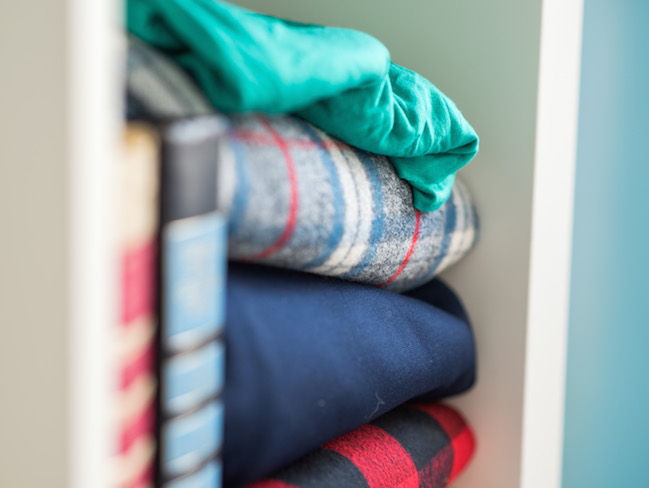
Choosing fabric is the most important step in sewing a garment — making the wrong choice can mean a big disappointment. Fortunately, there’s usually more than one “right” fabric for any pattern, and with a few pointers you can easily hit the mark.
How to Choose Fabric for Clothes
When starting a sewing project, you’ll begin in one of two places: either you’ll have fallen in love with a pattern and need fabric to make it, or you’ll have fallen in love with a fabric and need to find a suitable pattern.
Picking Fabric for a Pattern
Picking fabric for patterns is simple, as patterns tell you which types of fabric they were designed for. Although there are no sewing police to come arrest you if you deviate from the suggested fabrics, beginning sewists especially will want to stick to the list. The fabrics listed will have properties (in terms of weight, stretch and drape) that complement the design of the pattern.
12 types of fabric commonly used for garment sewing:
- Cotton voile: Voile is a lightweight, semi-sheer fabric with a great drape.
- Cotton lawn: Lawn is very similar to cotton voile but is slightly crisper.
- Rayon challis: Rayon challis is a smooth, lightweight fabric. It drapes well and is slightly heavier than other lightweight fabrics, like cotton voile and cotton lawn.
- Chambray: Chambray is another smooth, lightweight fabric. It doesn’t drape as well as rayon challis, cotton voile or cotton lawn.
- Denim: Denim is a heavy-weight fabric with very little drape or stretch.
- Double gauze: Double gauze is a unique fabric in that it is literally two layers of gauze woven together. The double layer of fabric eradicates the main problem of sewing clothing from gauze (the sheerness), while retaining the good qualities (extremely light and breathable).
- Knit: In the knit fabric category, there are several types of knit, varying from lightweight to medium weight. Knit fabric is your go-to for any garment that needs to have a great deal of stretch. Patterns are designed for either woven fabric or knit fabric, and patterns sized for knit fabric will often specify the degree of stretch needed in the fabric.
- Silk: Silk is a lightweight, delicate fabric that drapes well. It has a slightly shimmery appearance. Silk can be slippery and more difficult to work with. It also makes a great lining fabric.
- Satin: Satin can vary from lightweight to heavyweight, depending on the type of satin. Like silk, it has a glossy appearance.
- Linen: Linen is a medium-weight fabric with little elasticity (hence the wrinkles). But it conducts heat very well, which is why it’s a popular choice for warm-weather anything.
- Wool: There are over 200 different types of wool, coming from 40 different breeds of sheep, so the weight will vary depending on the type of wool. Wool is extremely hard-wearing and versatile. It’s also very warm and a good choice for colder weather garments.
- Flannel: Flannel is a soft, lightweight fabric. It works well for colder-temperature shirts, pants and jackets.
Finding a Pattern for Your Fabric
If you have a few yards of fabric you’re crazy about, but no pattern in sight, don’t fret. Use the type of fabric to determine what you make.
- Pants: Linen (for warmer weather); denim; flannel; and wool.
- Shirts and blouses: Cotton voile; rayon challis; double gauze; knit; silk; chambray; cotton lawn; linen; and flannel (for less drapey shirts and blouses).
- Skirts: Cotton lawn; rayon challis; denim; knit; and linen.
- Dresses: Cotton voile; cotton lawn; rayon challis; double gauze; knit; silk; satin; linen; and wool (for colder weather).

Amaizing
You might want to check your list. Wool, silk, and linen are fibers, not necessarily fabrics. Silk can be anything from a gossamer chiffon to a heavy textured woven for coats or jackets. Linen and wool also come in a variety of weights, and all those fibers can be found as knits. Since many new sewing enthusiasts get confused about the difference between "fabric" and "fiber", it would be helpful if the information provided were accurate so they are not even more confused.
I am always learning!!
How do I mark/save this article, so I can find it again?